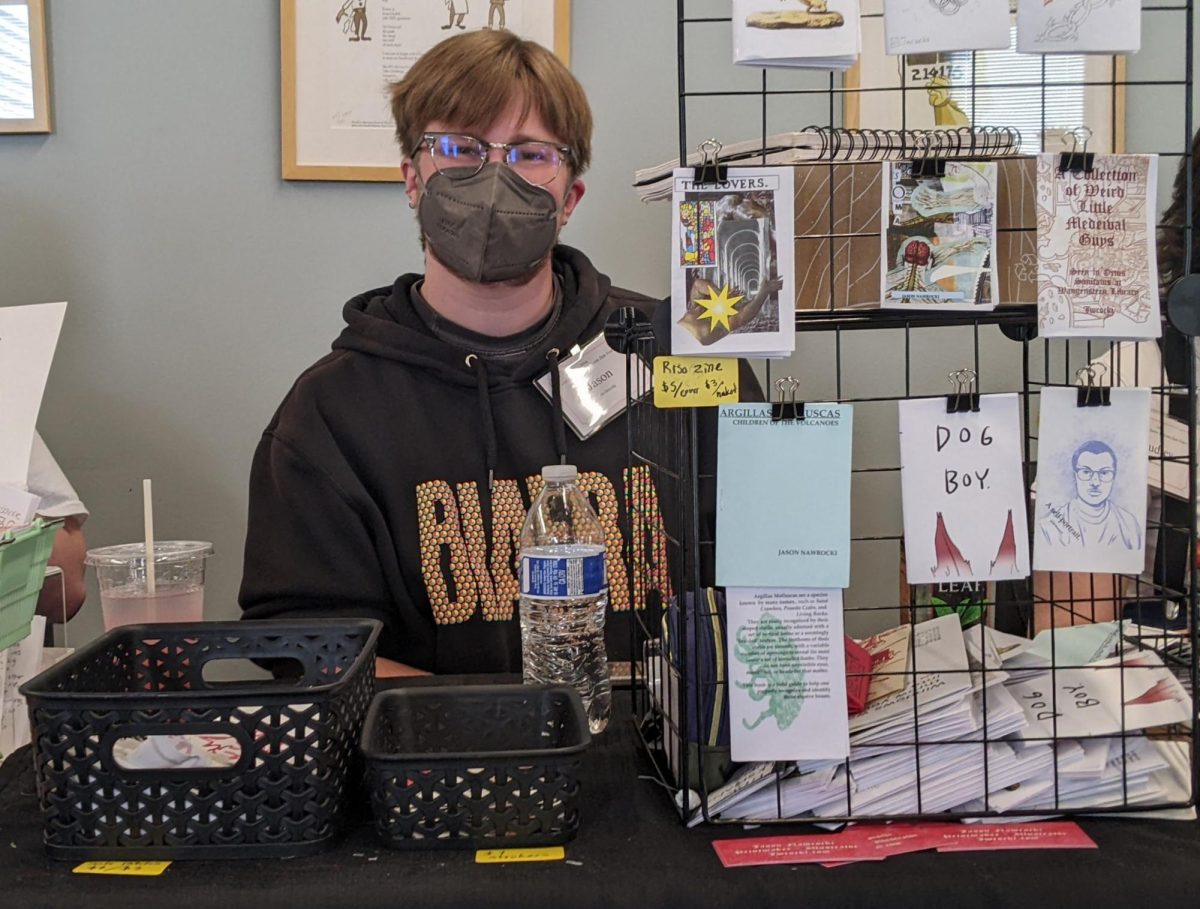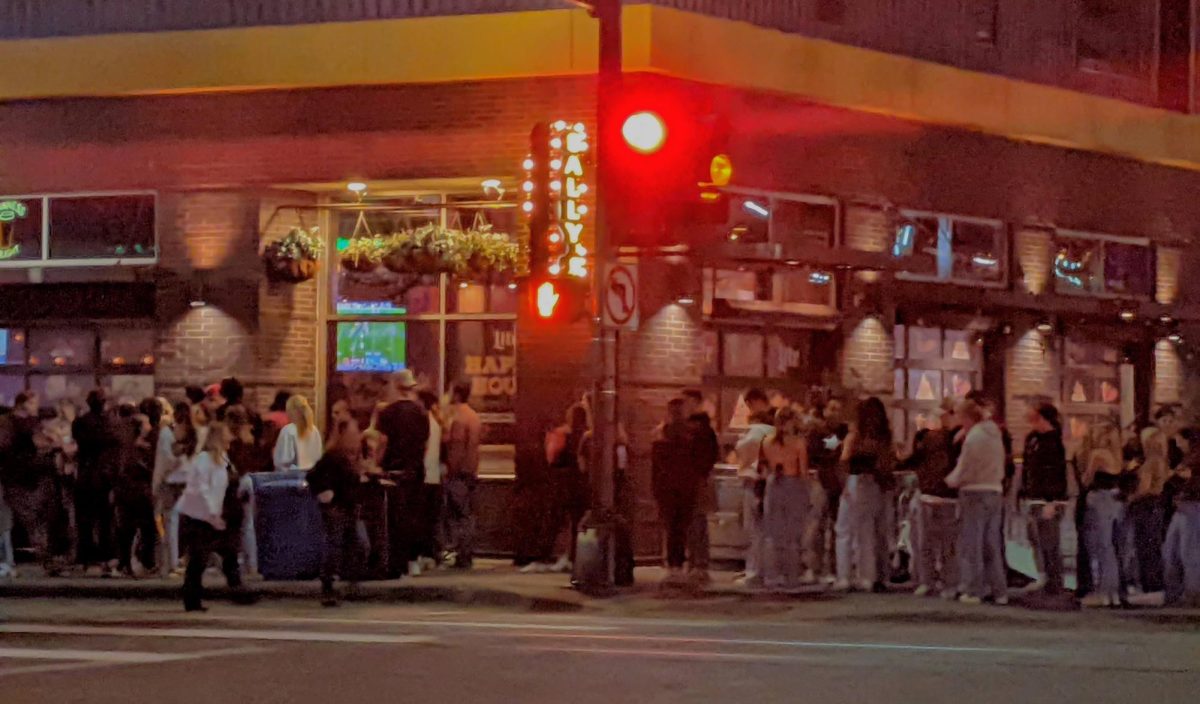If it seems like the words “festival” and “appropriation” don’t go together, you probably haven’t heard DJ Dangermouse’s “The Grey Album.” Reaching one hand into rock ‘n’ roll at its most fresh-faced and one into classic hip-hop, the DJ ran Jay-Z’s raps over Beatles’ backgrounds, creating an album that more people grooved to than cashed in on – a classic formula for getting busted in the music biz. If you were one of the many that partied to “The Grey Album,” then you just might have danced to appropriated art.
When: Nov. 2nd to Nov. 30th,
Gallery open Thursday, Friday, 2 – 8p.m., Saturday, Sunday 12 – 5 p.m.
Where: The Soap Factory, 518 2nd St. S.E., Minneapolis
Tickets: Free, www.festivalofappropriation.org
The Soap Factory’s latest exhibit, “The Festival of Appropriation,” explores the phenomenon of “sampling,” and its ability to slice up and re-weave nostalgia, as well as place a microscope over the countless slogans and mottos dripping down from corporate high offices. Co-curators Jon Nelson and Kate Iverson explored this theme by scouring mnartists.org, a web encyclopedia in the land of 10,000 galleries.
“Object of Motivation Becomes a Reminder of Failure” sounds like it could be the memoir of a wry “Top Model” castaway with an apartment full of “Vogues.” Come to think of it, a title like that could tell a lot of stories, but in the case of painter Scott Stulen, the bittersweet memento is a colored-pencil rendering of a “Star Wars” soundtrack. Robots lifted from George Lucas and a demure Bambi are common themes of his work, surrounded by piles of ruby red glitter and smudged highlighter.
Stulen’s biography states that his works are “emerging from a foggy haze of childhood memories,” and the ironic christenings suggest a filter created by an adolescence of too many readings of “The Love Song of J. Alfred Prufrock.”
While Stulen sketches ambivalently about childhood kitsch, Michael Thomsen’s work clings to a lost sense of wonder as if, like many shiny doo-dads, it’s about to become obsolete. A self-described “demented toymaker,” he creates kitchen-sink size spectacles that are somewhere between playground toys and shrines.
“Pony Show” is a merry-go-round artifact painted with sparkling mardi-gras colors and torn open on one side to reveal guts made of string lights, opalescent globes, and a tilting pagoda.
Like a carnival’s ominous future-divining device, “Round About” is made from masterfully combined junk drawer treasures. The center is a white, Mickey Mouse-like hand with a globe in its palm, and a close peer will display a tiny depiction of a woman under a full moon (Which is actually a small version of one of Thomsen’s own paintings). Under each of his pieces sits a small stool, anticipating curious children who want to peer at each unexpected detail.
Emerging from the trinket shop, John Grider’s collages have a glossy sheen that easily disguises a pessimistic message. “Newschool Family Crest” is a punchy cut-and-paste collage in the style of swanky vodka ads that holds a critical comment on school, family, or national pride. A marker-drawn, emaciated child sits among a backdrop of gorillas and skulls, as a withered hand drops down toward it from a gray sky. No bald eagle or brave lion here.
Placing commentary smack dab in the format that brainwashes us, dumbs us down, or persuades us that we need a frappucino is artistic appropriation on the front of the battle for free thought.
If throwing a corporate logo into art is like sticking an ivory peddler into a “Save the Elephants” party, then artists like Chad Rutter excel at using media to express this delicious awkwardness. His paintings are a series of subtle farm fields, stuck in gaudy frames made from Quarter Pounder and Taco Bell Burrito wrappers.
This immediate clash between the hard-working farmer stereotype and the “late night fast food” ritual is articulated in one food-label frame that’s not like the others. A silver wrapper well suited for a roast beef sandwich reads “Manifest Destiny” in cheery pink writing that is nestled amongst smiling soda cups. The fake burger joint’s slogan, “it’s all yours,” brings the idea of old-fashioned capitalist greed to the table.
Sticking copyrighted restaurant slogans and Disney characters into exhibits won’t get these artists in trouble, explained co-curator Jon Nelson, because criticism and comment of material is protected under the Fair Use Clause. Along with the Godzilla/ Barbara Streisand character from South Park, art that examines other art is more along the lines of free speech than copyright infringement.
Nelson does believe that musicians have a harder time falling under this clause, especially as the artists roll onto MTV and make teens believe that a Ray Charles sample was recorded by Kanye West.
On the upside, smaller acts can make use of the centuries-old method of sampling other art without fearing a scurry of lawyers approaching on the horizon. Nelson has been running “Some Assembly Required,” a radio show of “nothing but recycled sounds,” for eight years with virtually zero run-ins with copyright law.
The difference between Nelson’s Radio K show and Kanye West’s sample is, of course, money. Once a substantial profit is made from lifted material stuck in a new aesthetic neighborhood, the royalties kick in and any famous producer will have to pay up.
But as the movie “Josie and the Pussycats” pointed out, with its immense use of product placement to make fun of itself, even negative attention is attention; and when french fries are the subject, mock placement still gets the hunger going. In fact, art’s claws of appropriation just might be the same hands that re-inject an old idea right into your consciousness. So don’t be surprised if you find yourself stopping for a 24-ounce soda and a copy of Bambi on the way home from the factory.







